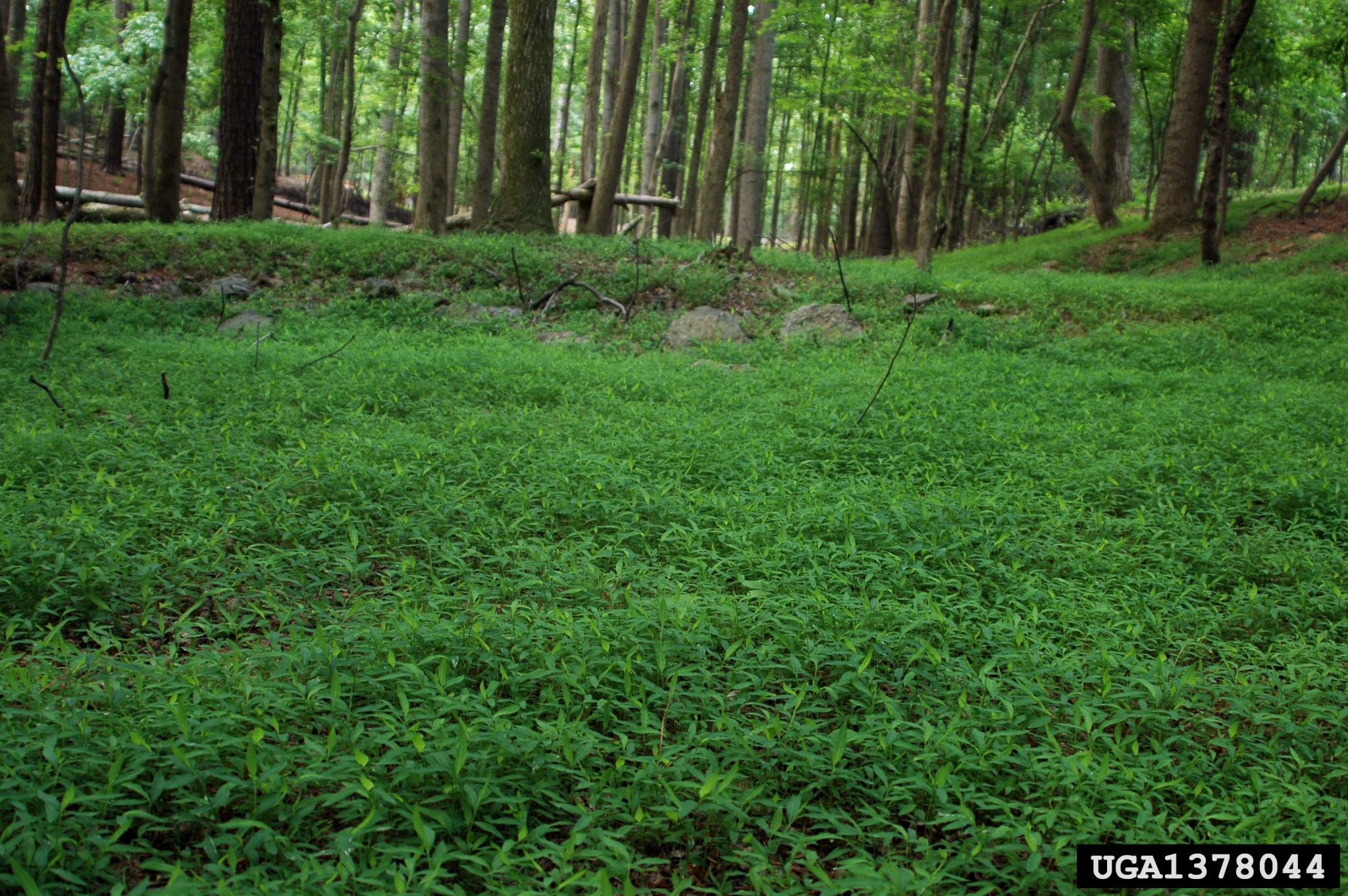Forestry & Wildlife

Introduction
Japanese stiltgrass (Microstegium vimineum), also called Nepalese browntop, is an aggressive invader of forest lands throughout the eastern United States. Infestations can impact the diversity of native species, reduce wildlife habitat, and disrupt important ecosystem functions. Stiltgrass is considered one of the most damaging invasive plant species in the United States. Infestations spread rapidly and the seed can remain viable in the soil for up to five years.
Correct identification is necessary before beginning any management activities. Fortunately, Japanese stiltgrass has a unique combination of characteristics that make field identification possible. This publication gives simple descriptions and clear pictures of these characteristics along with details on how to distinguish several common look-a-like species. For more information on Japanese stiltgrass ecology and management, visit www.rtrcwma.org/stiltgrass or www.invasive.org.
Download the Field Guide to The Identification of Japanese Stiltgrass below.
For questions about accessibility or to request accommodations, contact Extension Communications and Marketing at 334-844-5696 or extcomm@aces.edu.
Featured Image: Chris Evans, University of Illinois, Bugwood.org
Reviewed September 2021, Field Guide to The Identification of Japanese Stiltgrass, ANR-1457

